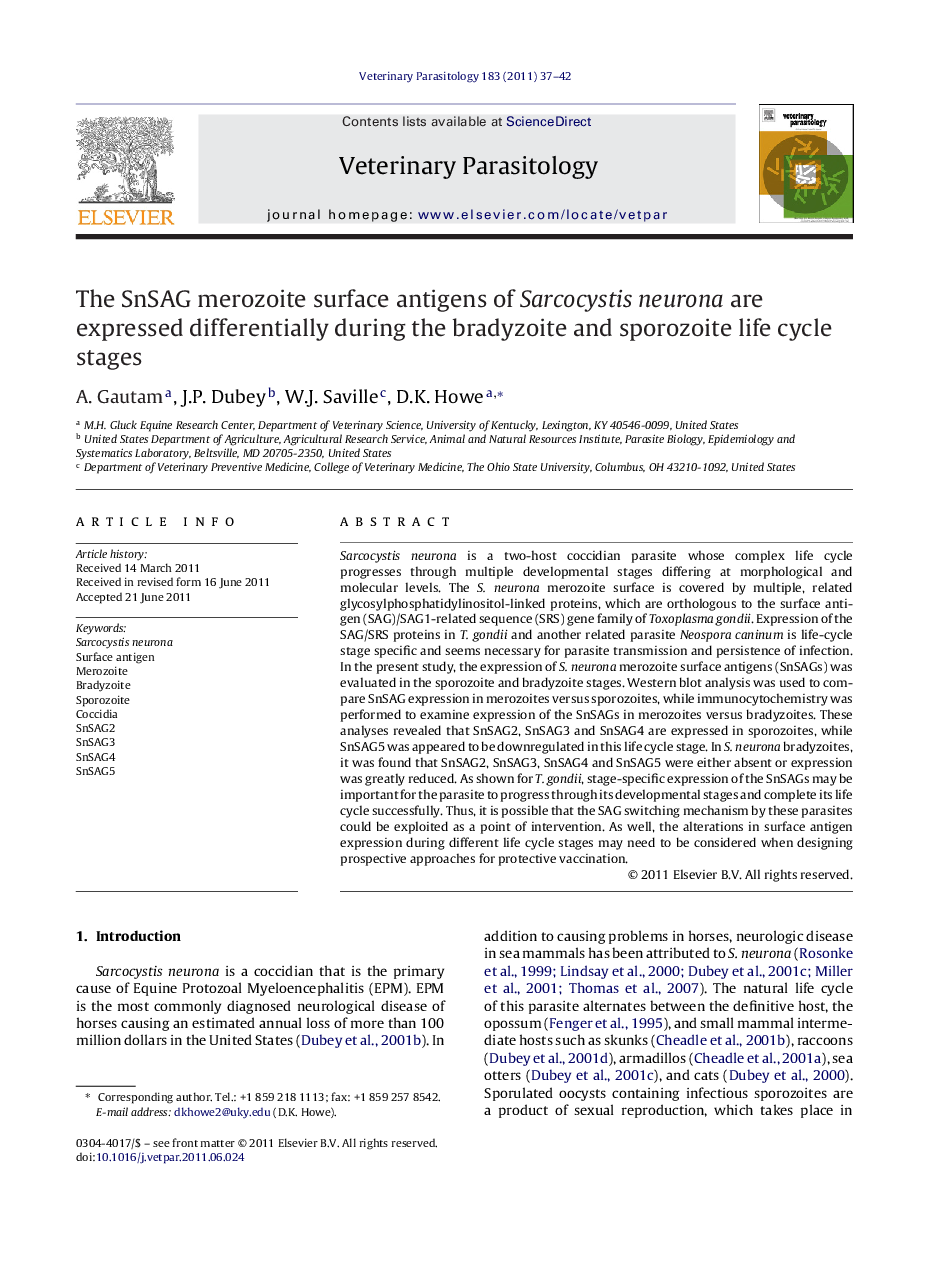| کد مقاله | کد نشریه | سال انتشار | مقاله انگلیسی | نسخه تمام متن |
|---|---|---|---|---|
| 5805263 | 1555719 | 2011 | 6 صفحه PDF | دانلود رایگان |

Sarcocystis neurona is a two-host coccidian parasite whose complex life cycle progresses through multiple developmental stages differing at morphological and molecular levels. The S. neurona merozoite surface is covered by multiple, related glycosylphosphatidylinositol-linked proteins, which are orthologous to the surface antigen (SAG)/SAG1-related sequence (SRS) gene family of Toxoplasma gondii. Expression of the SAG/SRS proteins in T. gondii and another related parasite Neospora caninum is life-cycle stage specific and seems necessary for parasite transmission and persistence of infection. In the present study, the expression of S. neurona merozoite surface antigens (SnSAGs) was evaluated in the sporozoite and bradyzoite stages. Western blot analysis was used to compare SnSAG expression in merozoites versus sporozoites, while immunocytochemistry was performed to examine expression of the SnSAGs in merozoites versus bradyzoites. These analyses revealed that SnSAG2, SnSAG3 and SnSAG4 are expressed in sporozoites, while SnSAG5 was appeared to be downregulated in this life cycle stage. In S. neurona bradyzoites, it was found that SnSAG2, SnSAG3, SnSAG4 and SnSAG5 were either absent or expression was greatly reduced. As shown for T. gondii, stage-specific expression of the SnSAGs may be important for the parasite to progress through its developmental stages and complete its life cycle successfully. Thus, it is possible that the SAG switching mechanism by these parasites could be exploited as a point of intervention. As well, the alterations in surface antigen expression during different life cycle stages may need to be considered when designing prospective approaches for protective vaccination.
Journal: Veterinary Parasitology - Volume 183, Issues 1â2, 29 December 2011, Pages 37-42